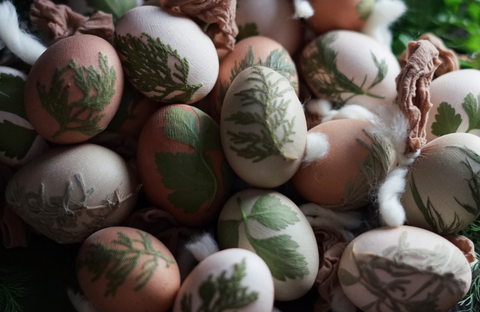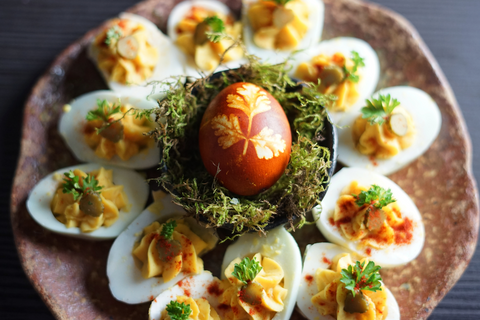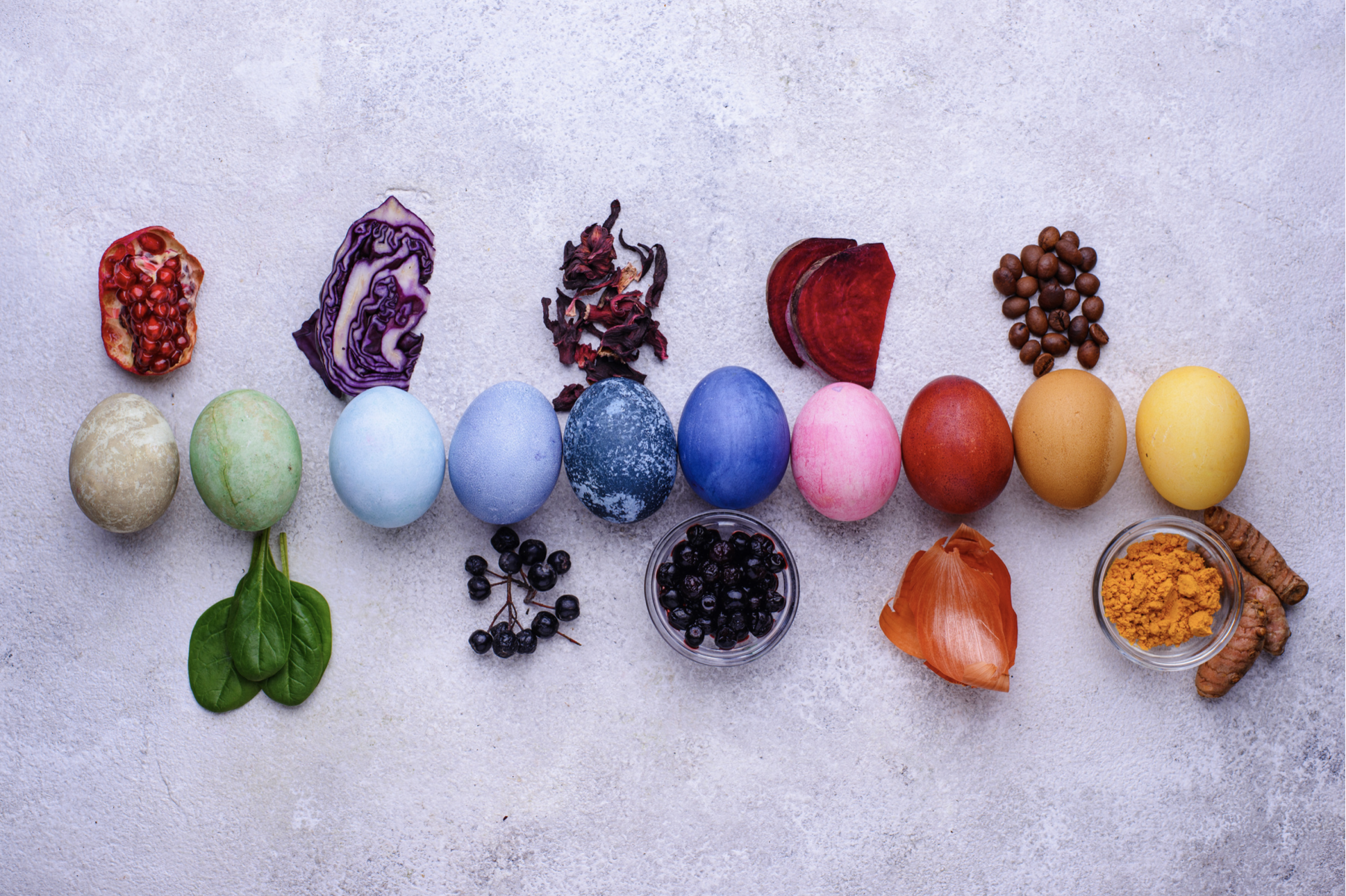“These festive eggs are a perfect combination of the hope both nestled in eggs and young herbs.”
To begin making your Botanical eggs you’ll need to source either wild or store bought herbs, but you want to make sure they are edible so you stay away from toxins. When it comes to the dyes you can use herbs such as yellow onion skins, red cabbage, blueberries, and turmeric.
Yellow onion skins
Onion skins can produce shades of a rusty orange to a pale gold to even a dark burgundy all depending on how long you concentrate the dye.
Red Cabbage
Produces a variety of blue hues. To prepare you’ll just need to slice a head of red cabbage and soak in vinegar.
Blueberries
Blueberries produce very beautiful blue hues to light lavender. Be careful with the amount of vinegar you use because of the pH balance of the blueberries.
Turmeric
When using turmeric as a botanical dye it produces a very light yellow hue, so the best way to produce a beautiful color is to boil the eggs in turmeric then adding it to another pot to produce a brighter color.
Read More: Wedelia: Connecting us to an abundant mindset
Materials
Eggs
Dyeing materials of your choice
White Vinegar
Old Pantyhoes or Cheesecloth
String
Edible Plants or Herbs
1 Tbs. Salt
Oil, for polishing
DIRECTIONS:
- Preparing the dyes: fill a pot halfway with the dyeing materials of your choice and the rest with water. Bring to a boil, then cover and let simmer for about an hour. After an hour let the dye cool to room temperature.
- While the dye is simmering, in a large bowl mix together a couple of tablespoons of white vinegar, 1 teaspoon of salt, and then fill halfway with warm water. Add your raw eggs and let sit for 20 minutes, and then set aside to dry.
- After the eggs are dried, you can begin making your botanical designs. You’ll start by cutting 3 centimeter squares of your pantyhose or 6 centimeter square pieces of cheesecloth. Then take a leaf of one of the herbs you chose and hold it against the egg, then wrap the fabric tightly and secure with a small amount of string. You want to securely wrap the string securely so the herb doesn’t move.
- Next, strain the dyes through a strainer to remove the dye material, and preserving the dye in a small pot. Add about ¼ a cup of white vinegar and then add the eggs and bring to a boil. Once the liquid is boiling, remove from heat and allow the eggs to cool down at room temperature. To ensure an even coating of dye make sure you turn the eggs every couple of minutes.
- If you want your eggs to be a darker color, allow them to soak in the dye for a longer period of time, but if you like like a pastel hue remove the eggs when the water is cooled. Once all of the eggs are dyed to your liking, carefully cut the fabric off (be careful for fingerprints) and apply a layer of vegetable oil to the eggs to make them shine.


Have fun and get creative!
For more information about Botanical Dyed Eggs and more ideas about serving, visit https://www.thewondersmith.com/blog/2018/3/4/botanical-eggs-and-a-spring-equinox-ritual-for-new-growth

1 thought on “DIY Naturally-Dyed Botanical Eggs”
Pingback: Wedelia: Connecting us to an abundant mindset